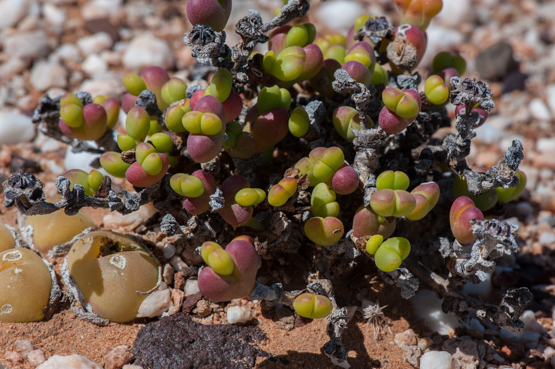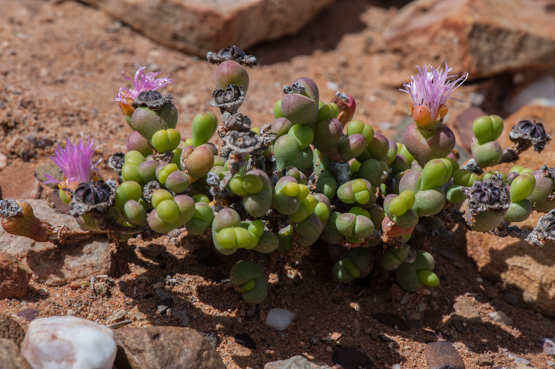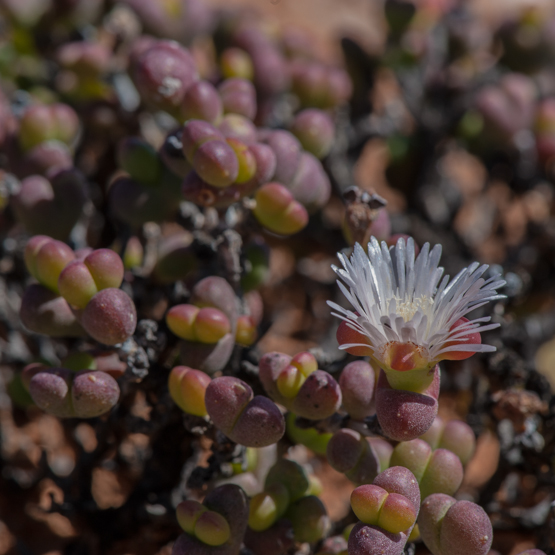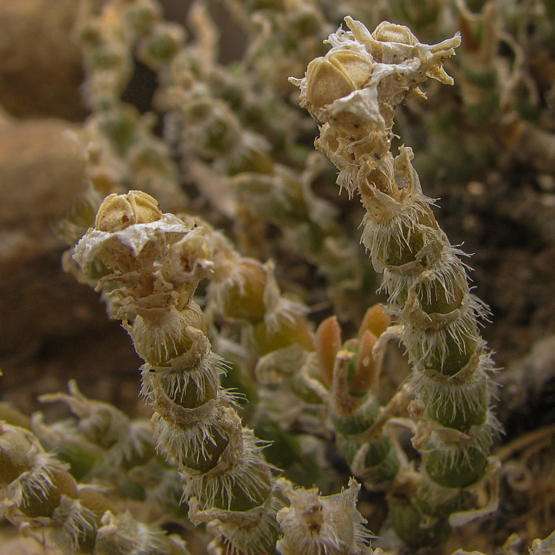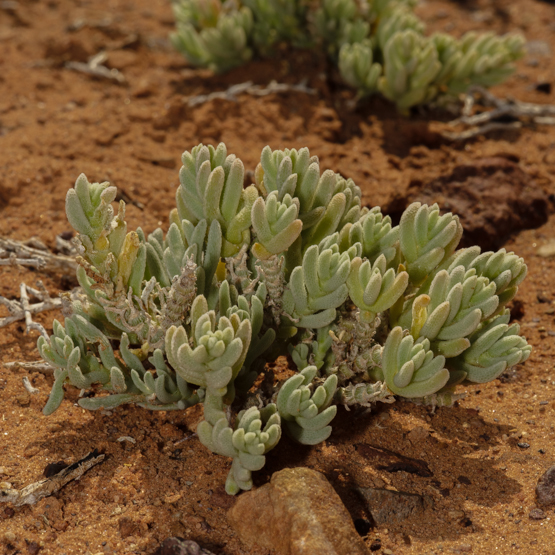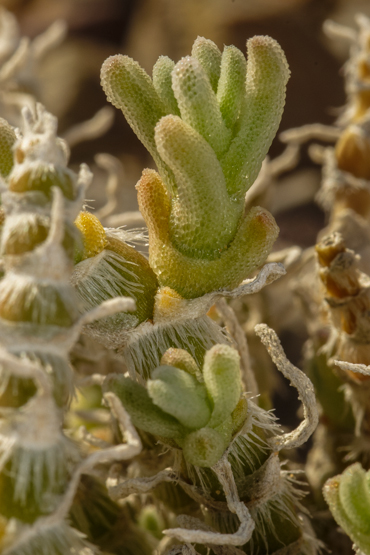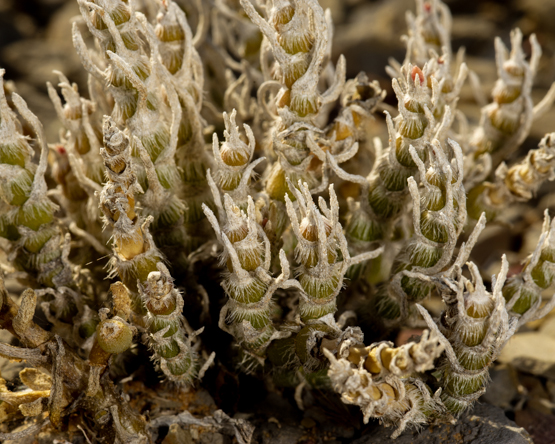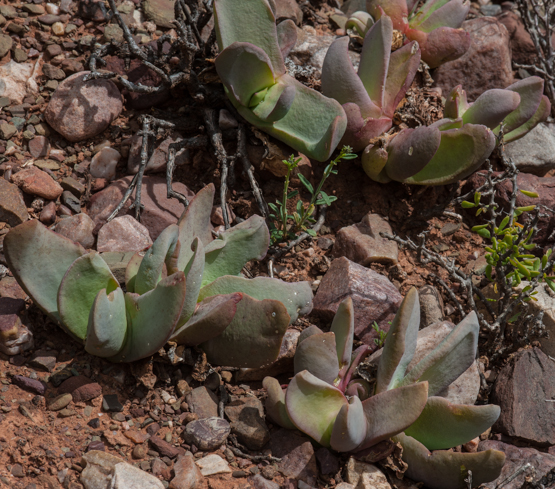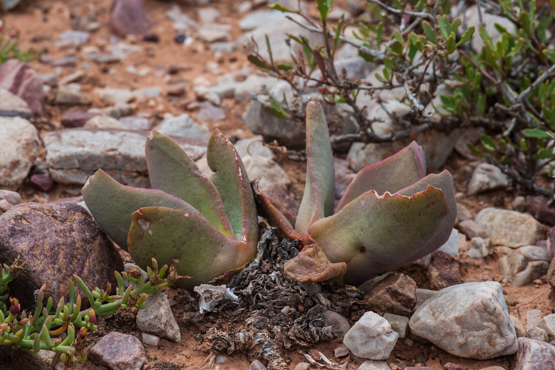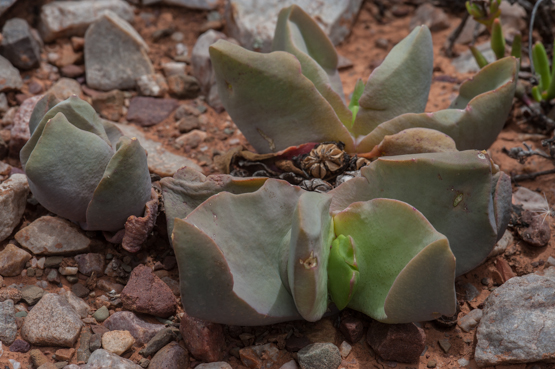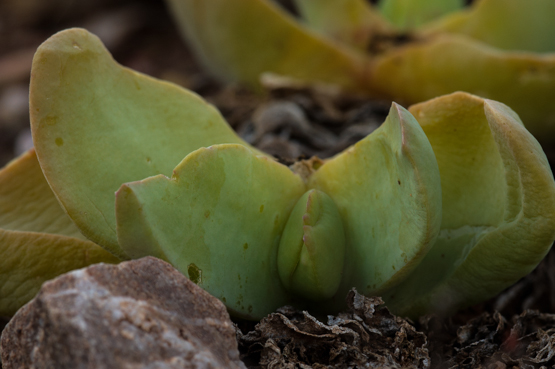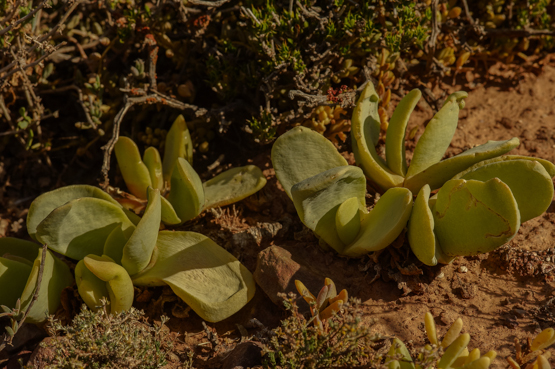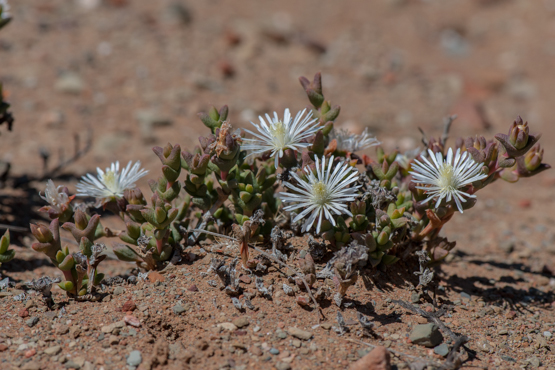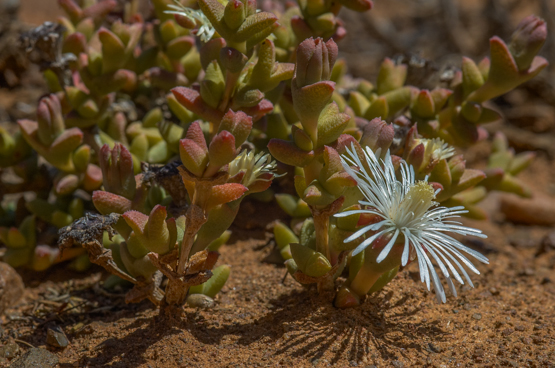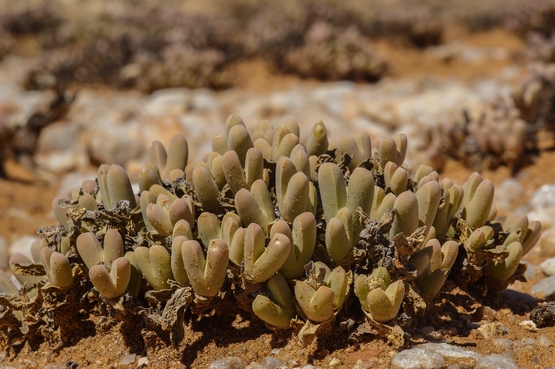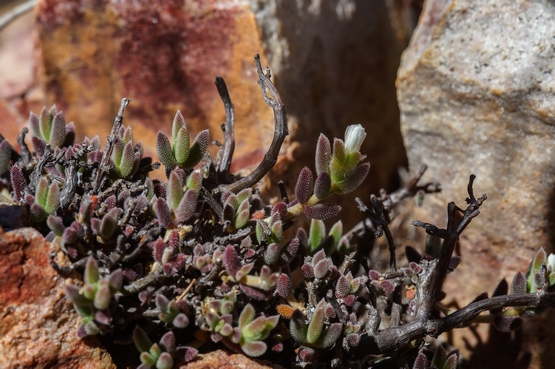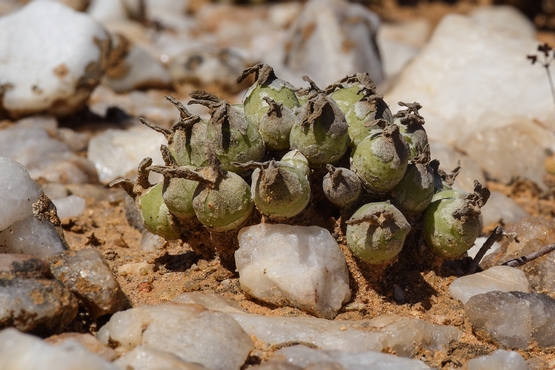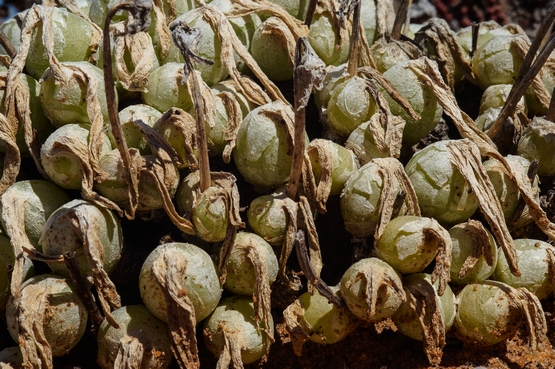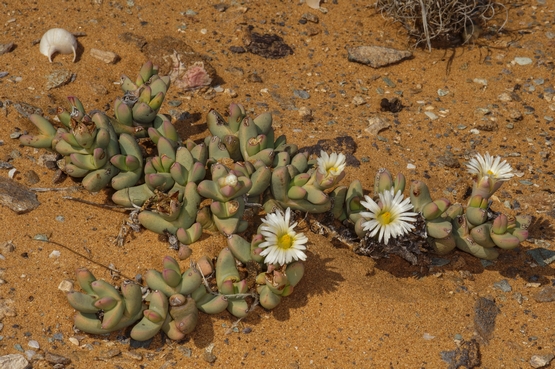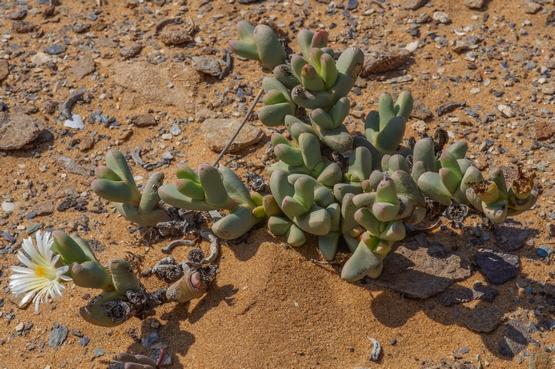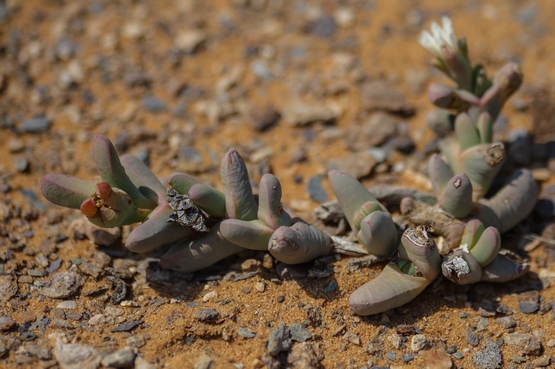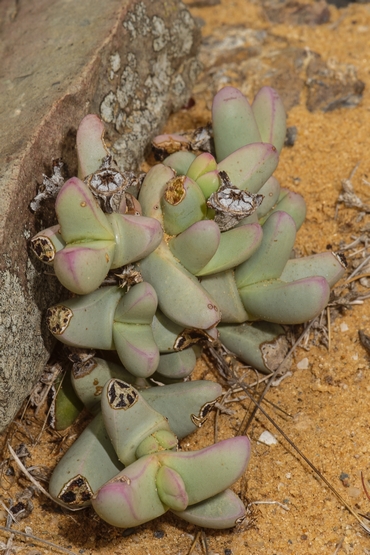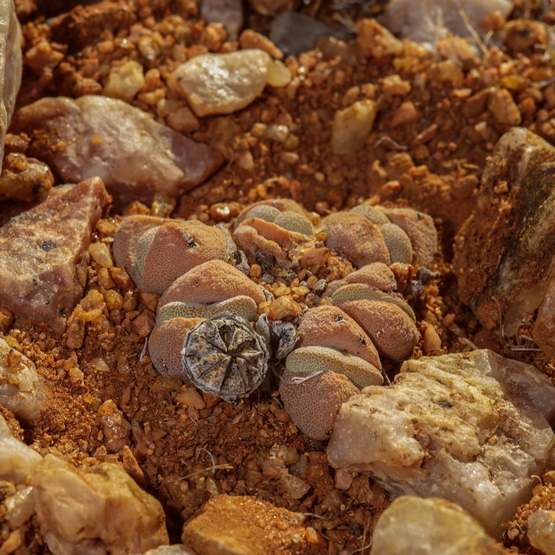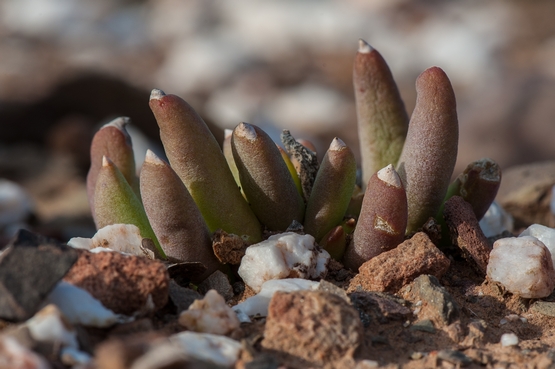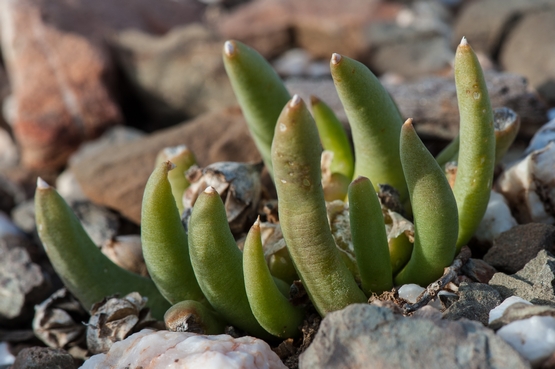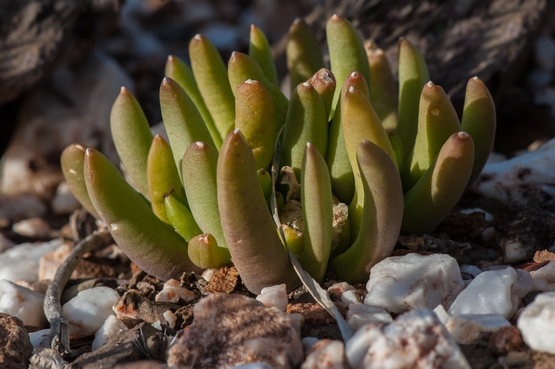Although this species and its sibling O. octojuge (see post 16 June this year) have the same general distribution area (Laingsburg, Ladismith and Swellendam), they never seem to grow together. It is a pity one does not see them in cultivation more often, as both are nice little shrubs (not more than 10 cm tall), with relatively big flowers. The photos were taken northeast of Montagu on the road to Anysberg on 30 October 2013. In the first picture you will also see Gibbaeum nuciforme.
Tag: Aizoaceae (Mesembryanthemaceae)
Brownanthus ciliatus ssp. ciliatus
Together with the other members of the genus this is among the few stem succulents in the family. The short-lived leaves are provided at their base with a fringe of long hairs (cilia = lash).
The plants occur from Calvinia in the north to Ceres in the southwest and Willowmore in the southeast, usually as pioneers on dry flats and on roadsides.
The first picture was made in autumn (4 April 2007), the others in winter (early August to early September 2010).
Glottiphyllum linguiforme
Another peculiar name: both glottis and lingua mean tongue, phyllum = leaf and forme = yes, indeed. So, in other words: the tongue leaf with the tongue shape.
The plants occur in the Oudtshoorn-Calitzdorp area, where the rainfall is 100-200 mm per year. They usually grow under shrubs on loamy or sandy soil with some quartzite and flower in late autumn and winter (March-June).
Ruschia nana
Two months ago I found one specimen of an interesting miniature shrub on the road from Montagu to the southwest entrance of Anysberg Nature Reserve (see first picture). After some digging in the literature I found out that it was Ruschia nana (nana = dwarf). The combination of 6 rather than 5 calyx lobes and locules (compartments in the fruit) on the one hand and compact growth on the other, is apparently unusual.
When I had another look at the picture, it occurred to me that I had seen similar plants a few years before on the farm near Matjiesfontein. By road this is quite a distance, but as the crow flies it is not more than about 70 km.
The other two pictures give an impression of these plants (as it happens they were also taken in October). I am sure they belong to the same species.
Jacobsenia (Drosanthemopsis) vaginata
Trichodiadema attonsum
We often refer to scientific names in biology as Latin names, because most of them are either derived from that language or are latinised from other languages. If that were the case here too, the second part of the name should be attonsa. The name Trichodiadema is however derived from Greek (thrix = hair and diadema = crown) and because diadema is a neuter word, the second part of the name has to be attonsum.
As the name implies, most species of Trichodiadema have a crown of hairs at the top of the leaves. The word attonsum means shaved or pruned and is quite appropriate, because this species lacks the diadema that is so characteristic for most other members of the genus.
According to the literature the species occurs on rocky outcrops, as shown in the first two pictures, taken on the Rooiberg near Calitzdorp (23 Oct. 2009).
The third picture was taken 2 days ago, near the southwestern border of Anysberg Nature Reserve. Although the plant clearly does not grow on an outcrop of any kind, there are quartz pebbles present.
Meyerophytum globosum
When I saw these peculiar plants first (1 April 2012), I was quite surprised, especially because there were so many of them. If it had not been in such a remote area I might even have wondered if someone was trying to make an April-fool of me.
Of the literature at my disposal, only the Illustrated Handbook of Succulent Plants came up with a name and a description. It also told me that the species used to be a member of the genus Monilaria.
The pictures were taken at Riethuis in Namaqualand and show plants in the resting stage. When they are in active growth, the plants look totally different, with much longer leaves (up to 70 mm long instead of at most 17 mm in the resting period). You can see the remains of these long leaves on top of the “globes”
Although the plants occur in a small area only, they form large populations there.
Juttadinteria deserticola
Ihlenfeldtia vanzylii
Glottiphyllum fergusoniae (2)
I lied to you yesterday. Not on purpose, but as a result of sloppiness. Sorry, sorry.
I told you I had never before seen Glottiphyllum fergusoniae in the wild, but in the meantime I found out that this is not true. When I published my post yesterday, I did not think too much of it. Actually I had been working on another subject, but that took much more time then I had envisaged, so I decided to follow the easy route and just publish a few recent pictures with little commentary.
Much to my surprise a lot of people apparently liked the post, which in turn prompted me to have another look at the pictures. Then it dawned upon me that I had seen similar plants in late June this year. Because I still lived in Calitzdorp at the time, I came from the east, which fact supposedly prevented me from making the mental connection. Looking at the map it became clear that the two localities involved are only about 40 kms apart. I had ID’ed the June plants as G. surrectum, but in hindsight I did not pay proper attention to the fact that the leaves in that species are distichous (in two opposite rows) rather than decussate (in crossed pairs).
The following pictures show you plants from the eastern locality.
